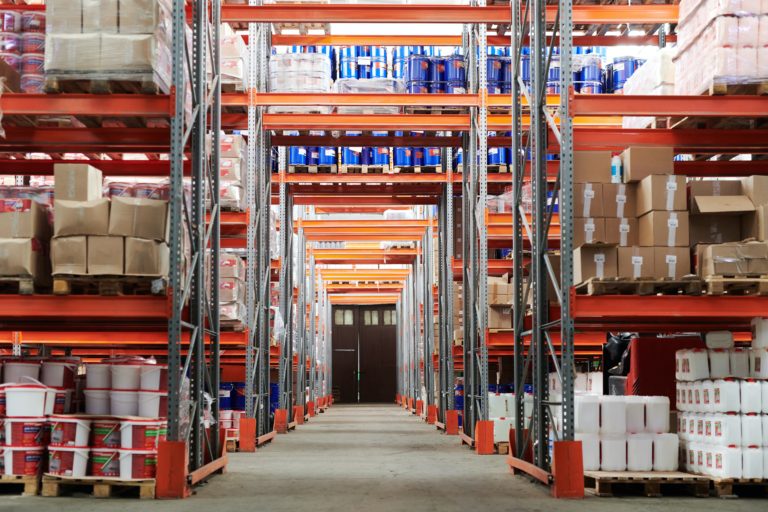
From increased fuel costs, skilled labour shortages, and overall economic volatility, warehousing, supply chain and logistics organizations are feeling the pressure to contain costs and remain profitable. Inefficiencies in your warehouse can have a domino effect on the rest of the supply chain which ultimately affects your customers and their experience with your company.
Maximizing profits for businesses takes a well-planned strategy to increase warehouse productivity while cutting down operations costs. Reducing warehouse costs is at the top of the list for many distribution professionals. At the same time, it is crucial that quality and customer service continue to improve. The way you manage your warehouse can have huge impacts on supply chain effectiveness, inventory profitability, and customer satisfaction.
So how do you increase productivity and decrease operational costs? Below are 10 effective ways to cut costs in your warehouse without sacrificing quality.
Do heat mapping and topographical and three-dimensional mapping of your layout. Look at:
Then, simulate what happens in the warehouse to predict at which points you’re likely to hit hotspots of heavy congestion, causing potential safety issues. Getting the top view of what’s going on, and then, in many cases, re-slotting the warehouse, creating different zones and spreading things out can create additional efficiencies.
Create a quality program that includes technology and common sense, alongside crossfunctional peer review or human auditing, where possible. The cost of poor quality can increase exponentially over time, so put measures in place to catch quality defects early in the production process.
Categorize and organize inventory throughout the warehouse or distribution center better to assign SKUs to their most optimal location. Slotting optimization is especially important for high-turn environments and fulfillment centers that experience high demand, lots of variety and fluctuations in shipping volumes. If you’re already in the process of a warehouse re-design, consider re-slotting as part of the strategy.
On a high level, place faster-moving inventory at the front, whereas slower-moving and heavier items can be placed towards the back.
Smaller spaces are the most cost-effective and, by changing storage procedures, you can take advantage of storing more in less. Racking is the best option for efficient inventory storage and storage space optimization. By using this practice, you will see an increase in allowable square footage for pallets. Improve warehouse flow and product placement, streamlining your warehouse inventory management to achieve increased efficiencies which in turn result in reduced costs.
Package and store inventory property to reduce damage. Train the team on proper storage procedures that reduce damage during storage and dring picking processes. A fully optimized warehouse will improve traffic flow, reduce loss of stock, and boost productivity, all resulting in overall improved efficiency.
Ensure safety processes and audits are in order. Safety precautions can fall to the wayside during periods of high production, and people can start cutting corners. This increases the risk of injury and therefore lost staff and halted production lines.
Making safety a priority communicates that you value your staff, and reduces the need to hire more people to replace injured staff, thus cutting the cost of training.
Where possible, implement energy efficiencies like better insulation and automatic lighting. During the winter, use windows as natural light and a potential heat source.
Use automation and data to garner important trends and insights into your warehouse, as well as be able to operate someone independently of physical human labour, be it manual picking or on-site interactions.
With no sense of the inventory on hand, it becomes far too easy to order too little stock (and have people fighting over sanitizer) or too much stock (and not be able to move it while your cash investment sits dormant on shelves). Not only will this create fulfilment issues but, depending on the nature of your business, can also lead to losses due to expiration.
Reduce idle time and wasted time walking between stations. Use Lean layouts to optimize walking paths and reduce unnecessary steps.
A bored employee is a dissatisfied employee that usually decreases productivity levels. Cross-train employees across functions and continuously train them to retain talent and increase productivity and employee satisfaction.
Automate manual tasks to streamline tasks and improve productivity.
Utilize a warehouse management system (WMS) to create fulfillment efficiency by automating the inventory lifecycle, such as assigning pick tickets billing processes and capturing real-time information from the time an order is received into the warehouse until it has been shipped.
Utilize a Transportation management system (TMS) to manage the freight and carriers once an item is ready to be shipped. Both of these systems create additional transparency into your supply chain processes and allow you to collect and analyze data effectively.
Utilize other technology including scanners to increase inventory accuracy and alert stock concerns and new trends. While these tech solutions may have an upfront cost, the value and efficiencies they can create will save you time, money and headache in the long run.
These efficiencies can increase working capacity and therefore reduce the need for capital expenditure. By optimizing storage practices, pick path and inventory management, you can avoid expanding and setting up new facilities including call centres, warehouses, or manufacturing plants.
Every warehouse is different, and some ideas will not work for all. Just keep in mind that each measure results in immense potential gains over the long-term including reduced errors, improved flexibility, effective management and improved customer satisfaction leading to greater competitiveness.
The Poirier Group’s approach to warehouse optimization is disciplined, direct and process-oriented. We help organizations tackle supply chain, logistics and warehousing challenges by combining deep operational experience in warehousing, with acclaimed methods of training and advanced analytics to support both complex and simple supply chains and warehouses.